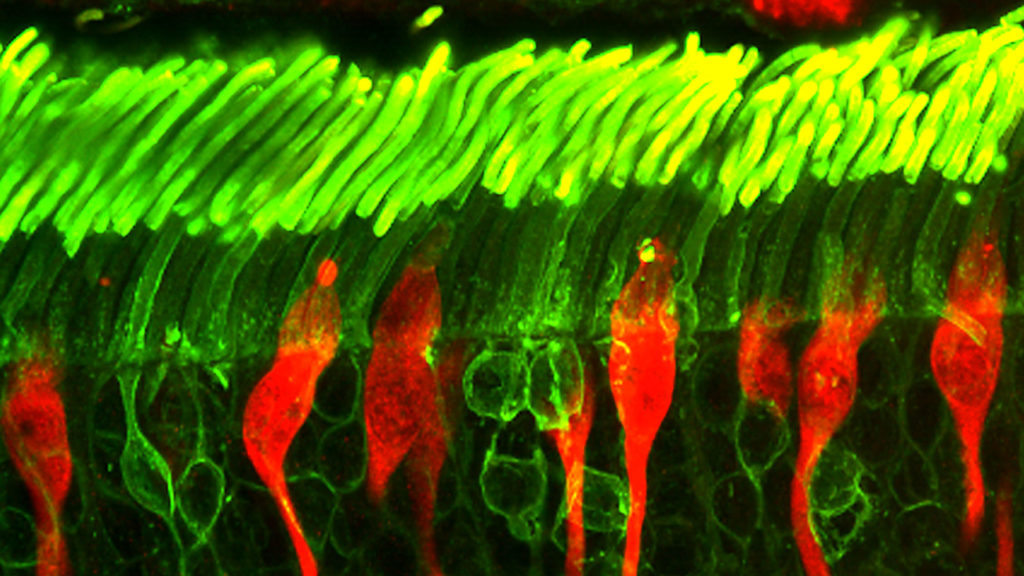CRISPR trick in mice points the way to possible treatments for inherited diseases
 March 8, 2018
March 8, 2018
With the power of the genome-editing tool CRISPR on display, scientists around the world have been hard at work in recent years — developing CRISPR-based therapies that may one day edit disease-causing mutations in our DNA for the treatment of inherited disorders.
But there are still great challenges with this powerful tool, and many diseases — including dominantly inherited disorders, in which a single mutated copy of a gene causes disease, despite the presence of a healthy copy — have yet to be solved.
A research team led by Qin Liu, MD, PhD, of the Ocular Genomics Institute at Mass. Eye and Ear, has successfully performed a proof-of- principle study, showing that a CRISPR “trick” can edit just the mutated copy of a disease gene, leaving the healthy one alone.
Published in the inaugural issue of The CRISPR Journal, Dr. Liu and her team reported that “allele-specific CRISPR editing” can preserve photoreceptor in a mouse model of a common form of dominantly inherited retinal degenerations.
Dr. Liu’s research team concentrates on gene-editing treatments for inherited eye diseases. “Since the launch of CRISPR-Cas9, we have been exploring ways to harness its power for treating inherited retinal degenerations,” said Dr. Liu. “In many dominant forms of these diseases, the mutant copy differs from the healthy one in just one nucleotide, which presents tremendous challenge for Cas9 system to achieve specific editing. We went through a number of steps to optimize our editing system.
Read more about this groundbreaking study in coverage by STAT News.
